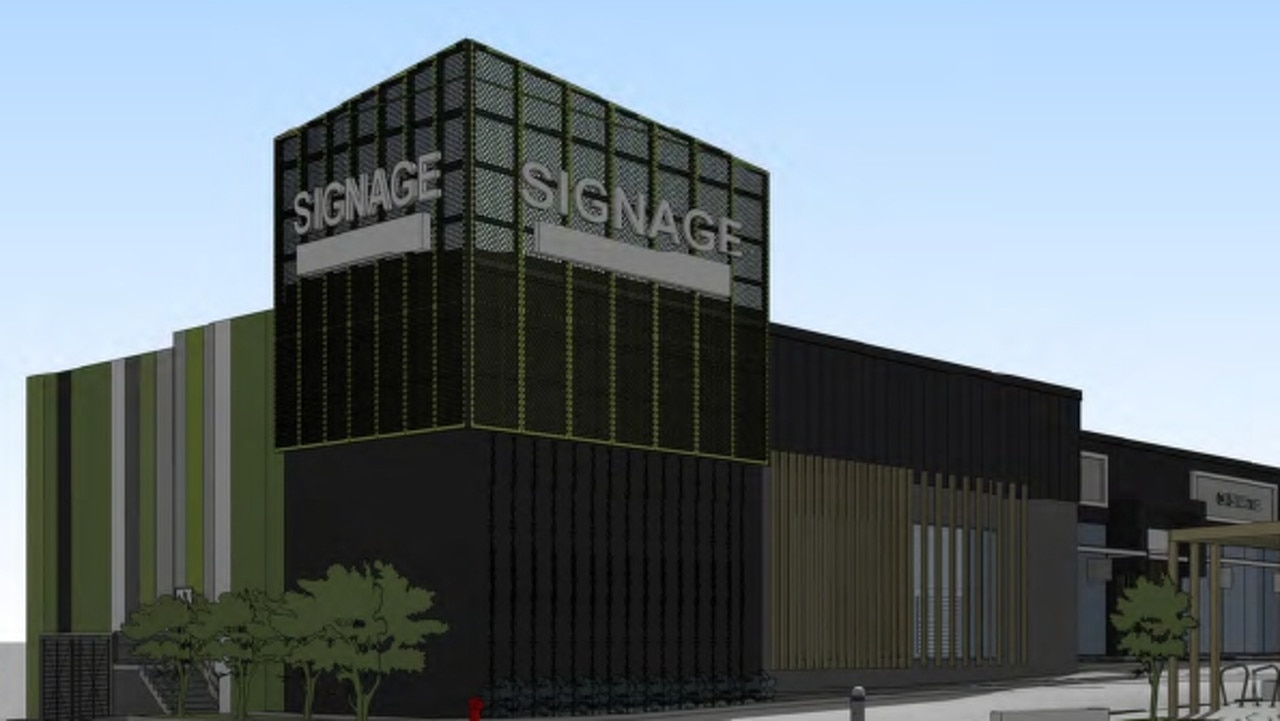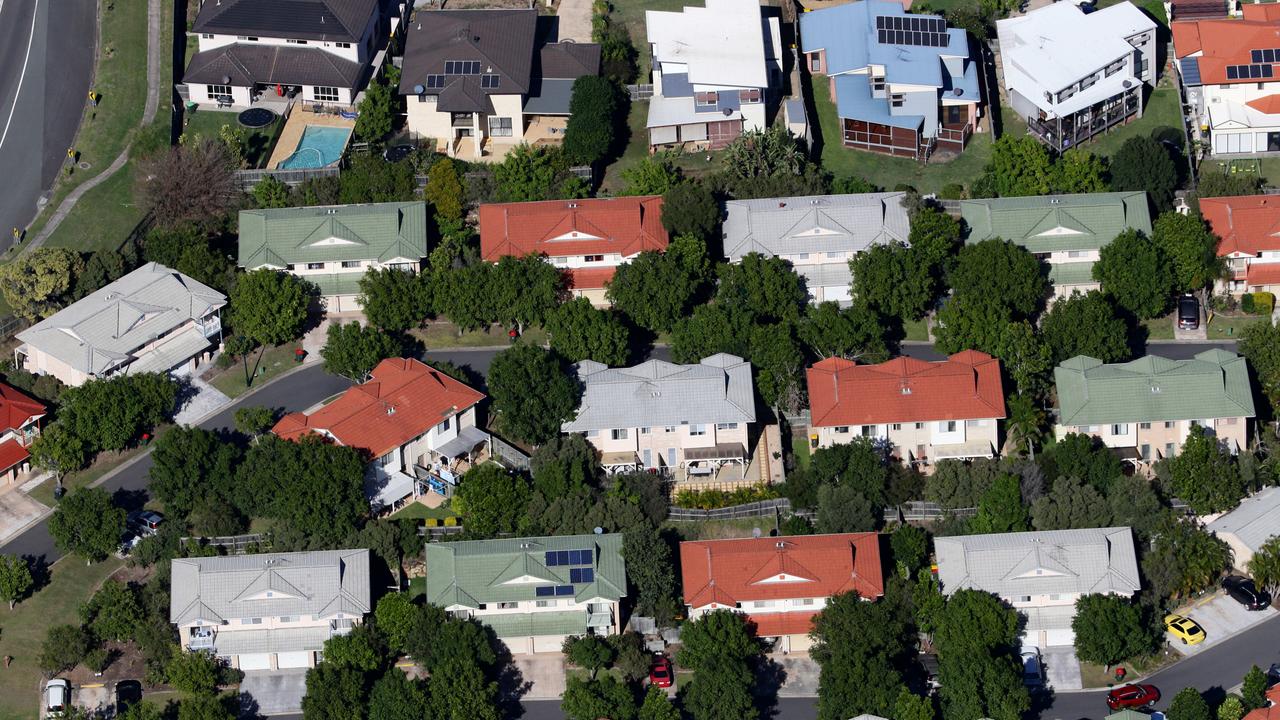Brisbane home values in shock freefall — 11pc drop largest on record
Brisbane home prices have fallen at the fastest pace and rate in history, with shock new data revealing values plunged nearly 11 per cent in just seven months.
Property
Don't miss out on the headlines from Property. Followed categories will be added to My News.
Brisbane home prices have fallen at their fastest pace and rate in history, with shock new data revealing values plunged nearly 11 per cent in just seven months — the largest percentage drop on record.
After hitting a peak in June last year, cash-strapped homeowners have watched the value of their properties plummet following eight straight interest rate rises and another set to come in February.
CoreLogic’s Daily Home Value Index shows Brisbane’s home values declined 10.9 per cent between the peak in June and January 28 this year, and economists warn there are likely more price falls to come.
CoreLogic head of research Eliza Owen said the city’s housing market was adjusting to a sharp increase in borrowing costs over the second half of 2022, which had likely hit buyers hard off the back of phenomenal price rises.
“It’s extraordinary,” Ms Owen said. “It’s not only the largest decline on record, but it’s the fastest, overtaking the peak-to-trough decline in Melbourne where we would usually expect to see these more extreme declines.”
Ms Owen said the combination of interest rate rises, a slowdown in interstate migration, and a correction to the extreme upswing in home prices during the pandemic, were to blame for the freefall.

“I think we’ll continue to see falling prices,” she said. “That seems inevitable with further rate rises, but notably we’ve started to see price falls ease a little bit across the Brisbane market.
“Perhaps, the worst of the freefall is coming to an end and we might start to see the market stabilise over 2023.”
Brisbane home values are still 28 per cent higher than they were at the start of the pandemic 2.5 years ago, thanks to 43.5 per cent upswing between August 2020 and June 2022.
The median home value in Brisbane has increased from $506,553 at the onset of Covid-19 in March 2020, to $707,658 at the end of 2022.

“Despite the large decline from peak, Brisbane maintains the third highest gain in value of the capital cities since the start of the pandemic,” Ms Owen said.
“For anyone who bought two or three years ago, their home value is still up substantially. It’s really those who purchased midway through last year who will experience the biggest shock.” Even then, she said most people were unlikely to sell straight away, so as long as they could keep servicing their mortgage, they would be fine.
PropTrack economist Eleanor Creagh said Brisbane’s home value gains during the pandemic were larger than most other capital cities and so, it perhaps, had further to fall, but the main factor driving down prices were the rapid rises in interest rates.

Ms Creagh said she expected another 0.25 per cent hike in the official cash rate when the Reserve Bank met next week, which would further reduce borrowing capacity and increase mortgage servicing costs.
“That continued reduction in borrowing capacity will weigh on prices in the period ahead, but we have seen the pace of monthly price declines ease in recent months compared to when interest rates first started rising,” Ms Creagh said.
“That slower pace of declines will likely continue as rates approach their peak in the first half of this year and home prices could begin to stablise if interest rate uncertainty reduces later in the year.

“People will have to make substantial budgetary reductions and repayments will be increasing, but you would hope people have been preparing for that eventuality.
“That impact is also offset by the fact they’ve made huge savings on what were record low fixed rates and some people when they refinance will be sitting on substantial home equity, which could potentially lower their loan-to-value-ratio (LVR) when it comes to refinancing.”
Brisbane mortgage broker Glen Barnes, of Barnes Finance Solutions (BFS), said he had noticed some home valuations for his clients dropping 5 per cent in the past three months.
Mr Barnes said the main reason was borrowing power had reduced substantially and banks had become stricter when it came to assessing home loan applications.
MORE: Qld’s top suburbs: $4m median price looms as Brisbane resurges
Luxury home for pampered fur babies creates social sensation
Ex Wallaby ups the rent amid strong Greater Brisbane demand
“The assessment rate has gone up almost 3 per cent,” Mr Barnes said. “The banks are still putting in place their buffer when assessing loans, but the impact to the borrower is that what they could borrow 12 month ago has come off hundreds of thousands of dollars in some cases.”
Despite the price falls, Mr Barnes is not rushing to tell his clients to buy property.
“If you were wanting to buy now, you’d want to buy well,” he said. “You’d need to negotiate hard on your purchase price because you want to have some buffer in place. Not only are rates going up, but the general cost of living as well.
“There’s a lag where people haven’t experienced for a sustained period of time these higher rates — but they will.”

But Real Estate Institute of Queensland (REIQ) CEO Antonia Mercorella said the figures should not be cause for alarm.
“In isolation, a dip of 10.9 per cent sounds quite dramatic, but I think it’s important to understand it’s also off the back of that swing of over 43 per cent in that period ending June 2022, which is pretty extraordinary,” Ms Mercorella said.
“I think all of us knew the accelerated growth in prices was not something we could sustain for much longer. I don’t think it’s cause for concern. I don’t think we’re seeing a bust.”
Ms Mercorella said the only people who may be impacted were those who were in a position where they needed to sell quickly.
“Saying that, days on market are still very short, buyer demand is still strong, and vendor discounting is still low,” she said.
“It was only mere months ago, the Palaszczuk government held a housing summit because we simply do not have enough housing. We have to remember demand far exceeds supply and those economic factors don’t point to a dip in prices, as a general rule.”

Brisbane newlyweds Jayden Cummins and Chloe Madeley own two properties — one they bought in Rochedale as an investment before the boom in 2020, and another that they purchased in Daisy Hill at the peak of the market in April last year.
Mr Cummins said he was concerned about the impact of further interest rate rises on their mortgage repayments, and recently moved his sister in to help with the rising costs.
“Our Rochedale property is about to be refinanced from 2.19 per cent to nearly 5 per cent in a couple of months,” Mr Cummins said.
“We had my sister move in downstairs to help with the repayments, so we can still enjoy the small things in life.”
But the 26-year-old, who runs a property maintenance company, is taking a long-term view on the market.
“We understand that after a big boom period and interest rates being at the lowest point ever, there is going to be a time of correction, and if we can tighten our spending over the short period, property is a long-term investment and will continue to grow,” he said.
“We hope this can set us up for our future family.”



